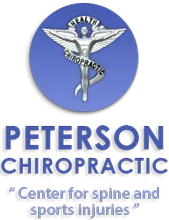
When a subluxation occurs, a chiropractor can correct the misaligned bone and allow it to return to its proper position. This procedure is appropriately called an adjustment, and the adjustment enables the body to heal. The chiropractic adjustment is a quick thrust applied to a vertebra for the purpose of correcting its position, movement or both. Adjustments are often accompanied by an audible release of gas that sounds like a "crack." The sound sometimes shocks people a little bit the first couple times they get adjusted, but the sensation is usually relieving. Occasionally, minor discomfort is experienced, especially if the surrounding muscles are in spasm or the patient tenses up during the chiropractic procedure. There are times when the audible "cracking" does not occur. This is often due to either significant muscle tightness or that the patient may be having a hard time relaxing during their adjustments. However, the chiropractic adjustment is still important. The leak is fixed. The wiring is fixed. Information is flowing again. To keep the wiring fixed, several adjustments over a course of time may be necessary, in addition to massage, physical therapy, stretching exercises, or strengthening exercises. In the chiropractic world, keeping the problem fixed and preventing its reoccurrence is just as important as the initial remedy.
There are actually five components that contribute to the vertebral subluxation complex (VSC).
- Bone Component - where the vertebra is either out of position, not moving properly, or are undergoing degeneration. This frequently leads to a narrowing of the spaces between the bones through which the nerves pass; often resulting in irritation or impingement of the nerve itself.
- Nerve Component - is the disruption of the normal flow of energy along the nerve fibers, causing the messages traveling along the nerves to become distorted. The result is that all of the tissues that are fed by those nerves receive distorted signals from the brain and, consequently, are not able to function normally. Over time, this can lead to a whole host of conditions, such as peptic ulcers, constipation and other organ system dysfunction.
- Muscular Component - since nerves control the muscles that help hold the vertebrae in place, muscles have to be considered to be an integral part of the vertebral subluxation complex. In fact, muscles both affect, and are affected by the VSC. A subluxation can irritate a nerve, the irritated nerve can cause a muscle to spasm, the spasmed muscle pulls the attached vertebrae further out of place, which then further irritates the nerve and you have a vicious cycle. It is no wonder that very few subluxations just go away by themselves.
- Soft Tissue Component - the VSC will also affect the surrounding tendons, ligaments, blood supply, and other tissues as the misaligned vertebrae tug and squeeze the connective tissue with tremendous force. Over time, the soft tissues can become stretched out or scarred, leaving the spine with either a permanent instability or restriction.
- Chemical Component - is the change in the chemistry of the body due to the VSC. Most often, the chemical changes, such as the release of a class of chemicals called "kinins," are pro-inflammatory; meaning that they increase inflammation in the affected area.
These changes get progressively worse over time if they are not treated correctly, leading to chronic pain, inflammation, arthritis, muscle trigger points, the formation of bone spurs, loss of movement, as well as muscle weakness and spasm. Chiropractors have known the dangers of the vertebral subluxation complex ever since the birth of the profession. More and more scientific research is demonstrating the tremendous detrimental impact that subluxations have on the tissue of the body. In order to be truly healthy, it is vital that your nervous system be functioning free of interference from subluxations. Chiropractors are the only health professionals trained in the detection, location, and correction of the vertebral subluxation complex through chiropractic care.
